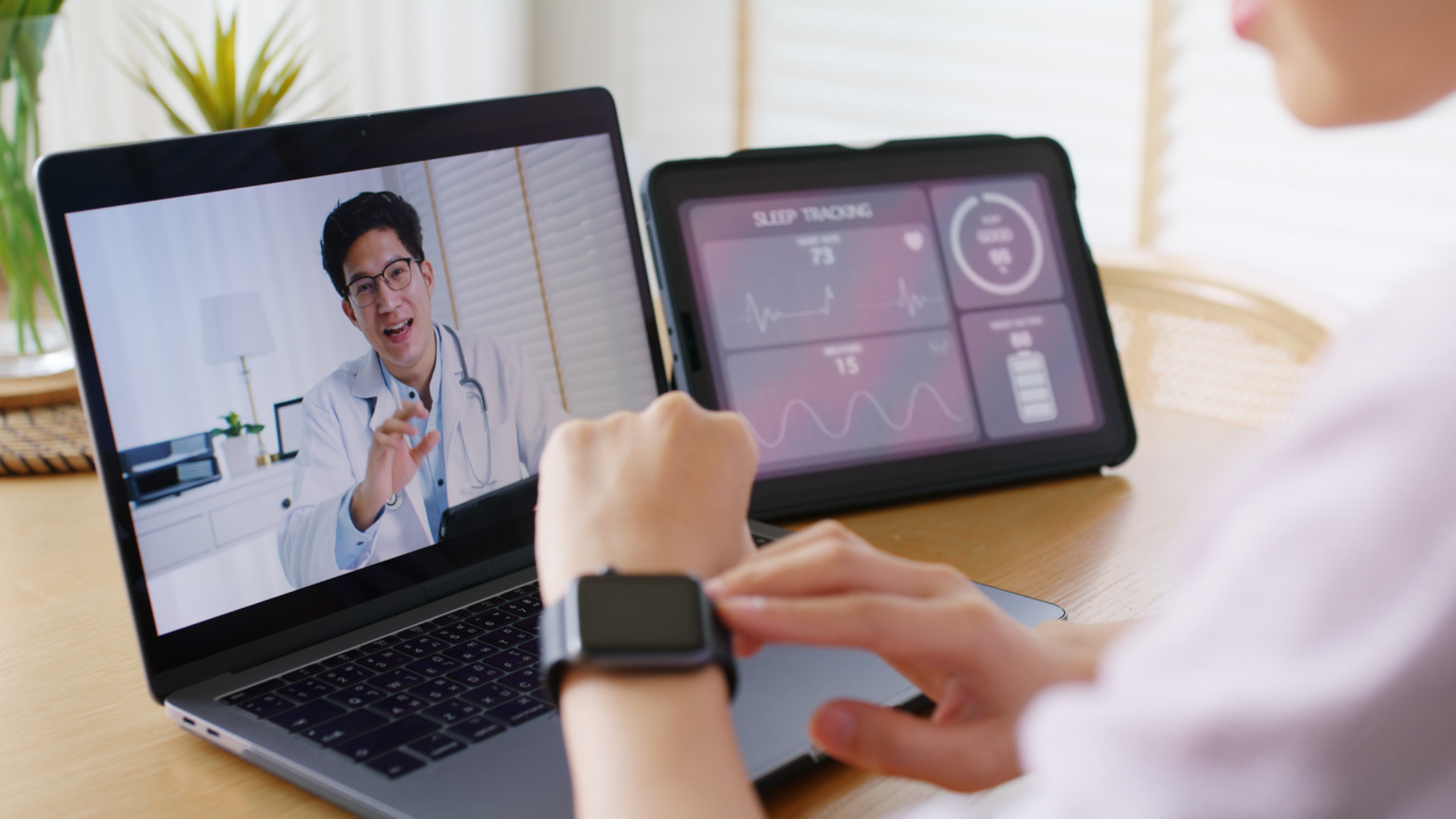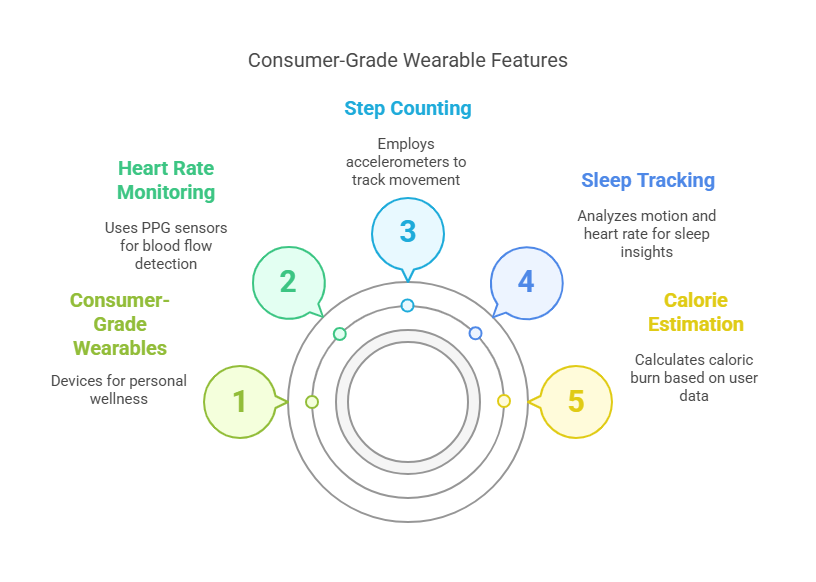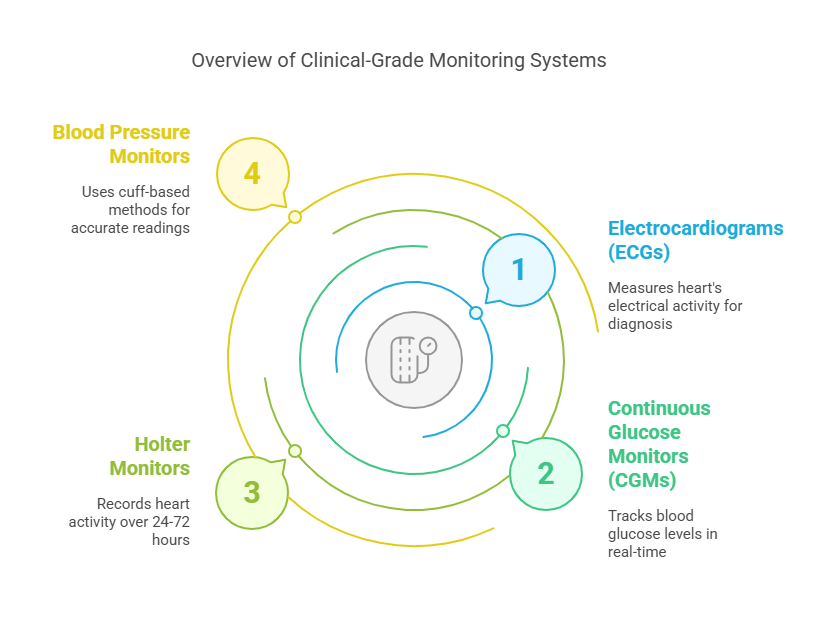Wearables vs. Professional Medical Monitoring Systems
In 2025, wearable health technology continues to evolve, blurring the lines between consumer-grade devices and professional medical monitoring systems. While both aim to monitor health metrics, they differ significantly in accuracy, use cases, and regulatory compliance. This comprehensive guide delves into these differences, helping you understand which device suits your needs.
Consumer-Grade vs. Clinical-Grade Devices
In the rapidly evolving healthcare landscape of 2025, both consumer-grade wearables and clinical-grade monitoring systems play important but very distinct roles in health tracking and management. Understanding the key differences between these categories helps users and healthcare providers make better choices.
Consumer-Grade Wearables
Consumer-grade wearables are devices primarily designed for personal wellness tracking and lifestyle enhancement. Commonly found in smartwatches, fitness bands, and health-focused earbuds, these tools have become widely accessible and popular thanks to their ease of use, aesthetic appeal, and affordability.
Key Features:
Heart Rate Monitoring:
Most wearables use Photoplethysmography (PPG) sensors, which shine a light onto the skin and detect changes in blood flow. While convenient, these sensors are prone to error due to motion artifacts, poor sensor-skin contact, or darker skin tones. Despite this, they offer a decent estimate of heart rate under steady conditions and are particularly useful for fitness tracking.Step Counting:
Using built-in accelerometers, wearables track your movements and translate them into step counts. While the technology has improved over the years, it may miscount steps during erratic movement or while driving.Sleep Tracking:
By analyzing motion patterns, resting heart rate, and sometimes blood oxygen levels, wearables provide insight into sleep duration and stages (light, deep, REM). However, the accuracy is limited compared to sleep lab studies (polysomnography), making it more of a rough guide than a clinical diagnostic.Calorie Estimation:
Caloric burn is calculated using algorithms based on age, weight, gender, heart rate, and activity type. These are approximate values and should not be considered medically accurate, especially for users with specific health or metabolic conditions.
Related Blog: Top 10 Everyday Devices That Use Medical Monitoring
Advantages:
Affordable and accessible
Encourages healthier lifestyle choices
Real-time health insights
Lightweight and stylish
Limitations:
Data may lack clinical accuracy
Limited by algorithmic generalizations
Not suitable for diagnosing medical conditions
Clinical-Grade Monitoring Systems
Clinical-grade devices are built to meet the rigorous standards of medical accuracy, safety, and compliance. These tools are commonly used in hospitals, clinics, or prescribed for home care under physician supervision. They're regulated by authorities such as the FDA (U.S.), EMA (Europe), and other regional bodies.
Common Devices:
Electrocardiograms (ECGs):
ECG machines measure the electrical activity of the heart via electrodes placed on the body. They are vital for diagnosing arrhythmias, myocardial infarction, and other cardiac conditions. Clinical ECGs are far superior in precision compared to the basic heart rate features in wearables.Continuous Glucose Monitors (CGMs):
These devices track blood glucose levels in real-time, often through a sensor embedded under the skin. Used primarily by diabetics, CGMs reduce the need for fingerstick tests and offer a comprehensive view of blood sugar trends over time.Holter Monitors:
A portable ECG worn for 24-72 hours, Holter monitors continuously record heart activity. They’re essential for detecting irregular heart rhythms that might not show up during a short ECG test.Blood Pressure Monitors:
Clinical-grade monitors, whether automated or manual, are calibrated for accuracy. Unlike some consumer devices that estimate blood pressure using pulse transit time, these devices use cuff-based oscillometric methods, which are the clinical gold standard.
Related Blog: How Hospitals Use Medical Monitoring to Save Lives
Advantages:
High precision and accuracy
Validated through rigorous testing
Essential for medical diagnosis and treatment
Capable of long-term and real-time monitoring
Limitations:
Higher cost
Often requires prescription and training
Less convenient for everyday personal use
Accuracy Comparisons
Heart Rate Monitoring
Consumer-grade devices use PPG sensors, which can be affected by movement and skin tone, leading to potential inaccuracies. A study found that while these devices are generally accurate at rest, their accuracy decreases during intense physical activity.
In contrast, clinical-grade devices like ECGs provide precise heart rate measurements, essential for diagnosing arrhythmias and other cardiac conditions.
Blood Oxygen Saturation (SpO2)
Many consumer wearables now include SpO2 sensors. However, their accuracy can vary, especially during movement or in individuals with darker skin tones. Clinical-grade pulse oximeters undergo stringent testing to ensure accurate readings across diverse populations.
Blood Pressure Monitoring
Consumer devices offering blood pressure readings often rely on algorithms and may not provide clinically accurate results. Medical-grade monitors use cuff-based measurements, offering reliable and validated readings crucial for hypertension management.
Lesser-Known Facts About Wearable Health Technology
FDA Clearance for Consumer Devices: Some consumer wearables have obtained FDA clearance for specific functions, bridging the gap between consumer and medical devices. (Source)
Data Privacy Concerns: Consumer devices often collect vast amounts of personal health data, raising concerns about data security and ownership. (Source)
Impact on Mental Health: Wearables can influence mental well-being, with some users experiencing anxiety over constant health monitoring. (Source)
Skin Reactions: Prolonged use of wearables can cause skin irritation or allergic reactions in some individuals.
Battery Life Variations: Consumer devices prioritize battery life, sometimes at the expense of data accuracy.
Integration with Electronic Health Records (EHRs): Some clinical-grade devices can sync with EHRs, facilitating better patient care coordination.
Use in Clinical Trials: Wearables are increasingly used in clinical research to collect real-time patient data.
Customization for Specific Populations: Certain wearables are tailored for specific groups, such as pediatric or geriatric patients.
Environmental Impact: The production and disposal of wearable devices contribute to electronic waste, raising environmental concerns.
Insurance Incentives: Some insurance companies offer discounts or incentives for using wearables to promote healthy behaviors.
Explore Courses for Clinical Research Career
Courses Available:
Conclusion
As wearable technology continues to advance in 2025, understanding the distinctions between consumer-grade and clinical-grade devices is crucial. While consumer wearables offer convenience and promote health awareness, clinical-grade monitoring systems provide the accuracy and reliability necessary for medical decision-making. For individuals seeking to monitor general wellness, consumer devices are suitable. However, for managing or diagnosing health conditions, professional medical monitoring systems are indispensable.
At CCRPS, we emphasize the importance of accurate health monitoring and advocate for the appropriate use of both consumer and clinical-grade devices to enhance patient outcomes.
Frequently Asked Questions (FAQs)
-
While they can alert users to potential issues, they are not a substitute for professional medical evaluations.
-
Some clinical-grade devices are available for home use but often require a prescription or medical supervision.
-
Regularly calibrate your device, follow manufacturer guidelines, and consult healthcare professionals for concerns.
-
Generally safe, but prolonged use can cause skin irritation. Ensure proper hygiene and take breaks from wearing the device.




